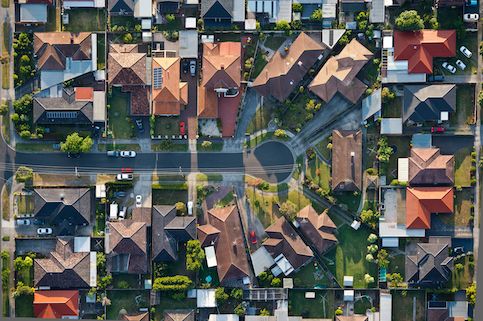When considering taking out a loan of any kind, it’s important to understand the repayment model. Otherwise, you’ll be flying blind into an expensive financial commitment. One common repayment structure is a fully amortized loan.
Let’s take a closer look at what this repayment model means for your finances.
What Is A Fully Amortized Loan?
A fully amortized loan is a type of loan where borrowers pay off their balance based on the loan’s amortization schedule. Borrowers who stick to this schedule will pay off their loan at the end of the loan term.
Within a fully amortized loan, amortization refers to the amount of principal and interest paid each month during the loan’s term. At the beginning of a loan, the bulk of your payment will cover interest. But as you continue further into the loan, the scales will tip. As you near the end of the loan term, your payment will increasingly cover the remaining principal balance.
As a borrower, you can explore what each of your payments will cover through an amortization schedule. It’s useful to see how your loan payments are allocated toward your outstanding principal balance.
See What You Qualify For
Buy A Home
Discover mortgage options that fit your unique financial needs.

Refinance
Refinance your mortgage to have more money for what matters.
Tap Into Equity
Use your home’s equity and unlock cash to achieve your goals.
How Fully Amortizing Loans Impact Your Payments
Fully amortizing loans have different impacts on different mortgage types.
With fixed-rate mortgages, your mortgage payment will remain the same for the duration of the loan term. The only reasons the payment may change are if your homeowners insurance or property tax bill changes. But the combined principal and interest payment will remain the same.
Although the combined principal and interest amount will remain the same, the portion allocated toward each expense will change every month. The amount going toward your principal balance will increase every month while the amount paying off your interest will decrease.
With adjustable-rate mortgages (ARMs), the amount of principal and interest in a payment can change after the end of the initial interest rate period. The loan will re-amortize each time the interest adjusts. This re-amortization ensures the loan balance is zero at the end of the term, even if the interest rate increases along the way.
Amortization Payment Schedule Example
So, you know what a fully amortizing loan means. But how does a fully amortized mortgage play out in real life?
The table below illustrates an amortization schedule for a 30-year fixed-rate mortgage. The total loan amount is $400,000 at a fixed interest rate of 4.5%.
Month | Fixed Monthly Payment Amount | Principal | Interest | Balance |
|---|---|---|---|---|
1 | $2,026.74 | $526.74 | $1,500 | $399,473.26 |
2 | $2,026.74 | $528.72 | $1,498.02 | $398,944.54 |
3 | $2,026.74 | $530.70 | $1,496.04 | $398,413.84 |
4 | $2,026.74 | $532.69 | $1,494.05 | $397,881.15 |
… | … | … | … | … |
357 | $2,026.74 | $1,996.62 | $30.12 | $6,034.91 |
358 | $2,026.74 | $2,004.11 | $22.63 | $4,030.80 |
359 | $2,026.74 | $2,011.63 | $15.12 | $2,019.17 |
360 | $2,026.74 | $2,019.17 | $7.57 | $0 |
Now, let’s see how the amortization schedule of a 30-year fixed-rate mortgage stacks up against a 5/1 ARM.
In this case, the initial mortgage balance is $400,000 with a term of 30 years. After 60 months, your 4.5% mortgage interest rate is expected to increase by 0.25% every 12 months with an interest cap of 12%.
Month | Monthly Payment Amount | Principal | Interest | Balance |
|---|---|---|---|---|
1 | $2,026.74 | $526.74 | $1,500 | $399,473.26 |
2 | $2,026.74 | $528.72 | $1,498.02 | $398,944.54 |
3 | $2,026.74 | $530.70 | $1,496.04 | $398,413.84 |
4 | $2,026.74 | $532.69 | $1,494.05 | $397,881.15 |
… | … | … | … | … |
357 | $2,842.74 | $2,743.12 | $199.62 | $8,377.72 |
358 | $2,842.74 | $2,767.69 | $75.05 | $5,610.03 |
359 | $2,842.74 | $2,792.48 | $50.26 | $2,817.55 |
360 | $2,842.74 | $2,817.55 | $25.24 | $0 |
Whether your home loan is an ARM or fixed-rate mortgage, a fully amortized loan ensures your entire principal balance gets paid off by the end of the loan term. Along the way, the percentage of your payment allocated toward the principal balance will increase while the percentage allocated toward the interest charges will decrease.
Fully Amortized Loans Vs. Other Loan Types
Fully amortized loans aren’t the only type of loan product out there. Let’s take a closer look at other available types of home loans.
Interest-Only Mortgages
Interest-only mortgages are a stark contrast to fully amortized loans. With an interest-only mortgage, you only make interest payments for a set period of time.
Not all interest-only mortgages work in the same way. Some have interest-only payments that transition into a fully amortizing payment after a set period of time. Others require a balloon payment for the entire principal amount after the interest-only payment term expires.
Neither interest-only mortgage structure requires you to work on paying down your principal while making interest payments. In contrast, with a fully amortized loan, at least a portion of each payment works to lower your principal balance.
Partially Amortized Loans
A partially amortized loan strikes a balance between fully amortized and interest-only mortgage options.
As you make mortgage payments, the funds will cover some of the principal balance, and the rest will cover the interest. But the principal balance won’t be completely paid off by the end of the loan term. There is often a looming balloon payment at the end of your loan term.
See What You Qualify For
You can get a real, customizable mortgage solution based on your unique financial situation.
Advantages And Disadvantages Of Fully Amortized Mortgages
Every financial product has advantages and disadvantages. Here’s what to be aware of:
Advantages
Amortization schedules on a fixed-rate loan simplify your mortgage payment breakdown. With a fully amortized fixed-rate loan, you’ll always know exactly what your mortgage payment is. And you’ll know exactly how much is going toward your principal balance.
Disadvantages
You’ll quickly spot the main disadvantage when you review the amortization schedule. With fully amortized loans, you pay the bulk of your interest charges upfront. It can take years before the bulk of your mortgage payment goes toward your principal balance.
The interest payments can be frustrating for borrowers trying to get out of debt.
Fully Amortized Loan FAQs
What is the difference between a fully amortized loan and a fixed payment?
A fully amortized loan can sometimes be referred to as a fixed-payment loan, but there are slight differences.
Both loan types have consistent, fixed payments that go towards the loan’s principal balance and interest. But the main difference is that a fixed-payment loan could still have a balance at the end of the loan term. Whereas a fully amortized loan, the amount is completely paid off by the end of the loan term.
What is an amortization schedule?
An amortization schedule is a table borrowers review to see how much their monthly scheduled payment is and how much goes toward principal and interest. You can use our mortgage amortization calculator to see what a fully amortized loan would look like for you.
Can you pay off a fully amortized loan early?
Yes, you can make extra payments to pay off your loan early. The extra payments will adjust your amortization schedule, and you’ll save more money over the life of the loan. Although, before you make any additional payments, check with your lender about any prepayment penalties. The fees can be costly, so you need to decide whether the fee is worth the cost.
The Bottom Line
A fully amortized loan is a common option for home buyers. You’ll have peace of mind knowing your principal balance will be eliminated by the end of the loan term.
Find A Mortgage Today and Lock In Your Rate!
Get matched with a lender that will work for your financial situation.

Sarah Sharkey
Sarah Sharkey is a personal finance writer who enjoys diving into the details to help readers make savvy financial decisions. She’s covered mortgages, money management, insurance, budgeting and more. She lives in Florida with her husband and dog. When she's not writing, she's outside exploring the coast. You can connect with her on LinkedIn.












